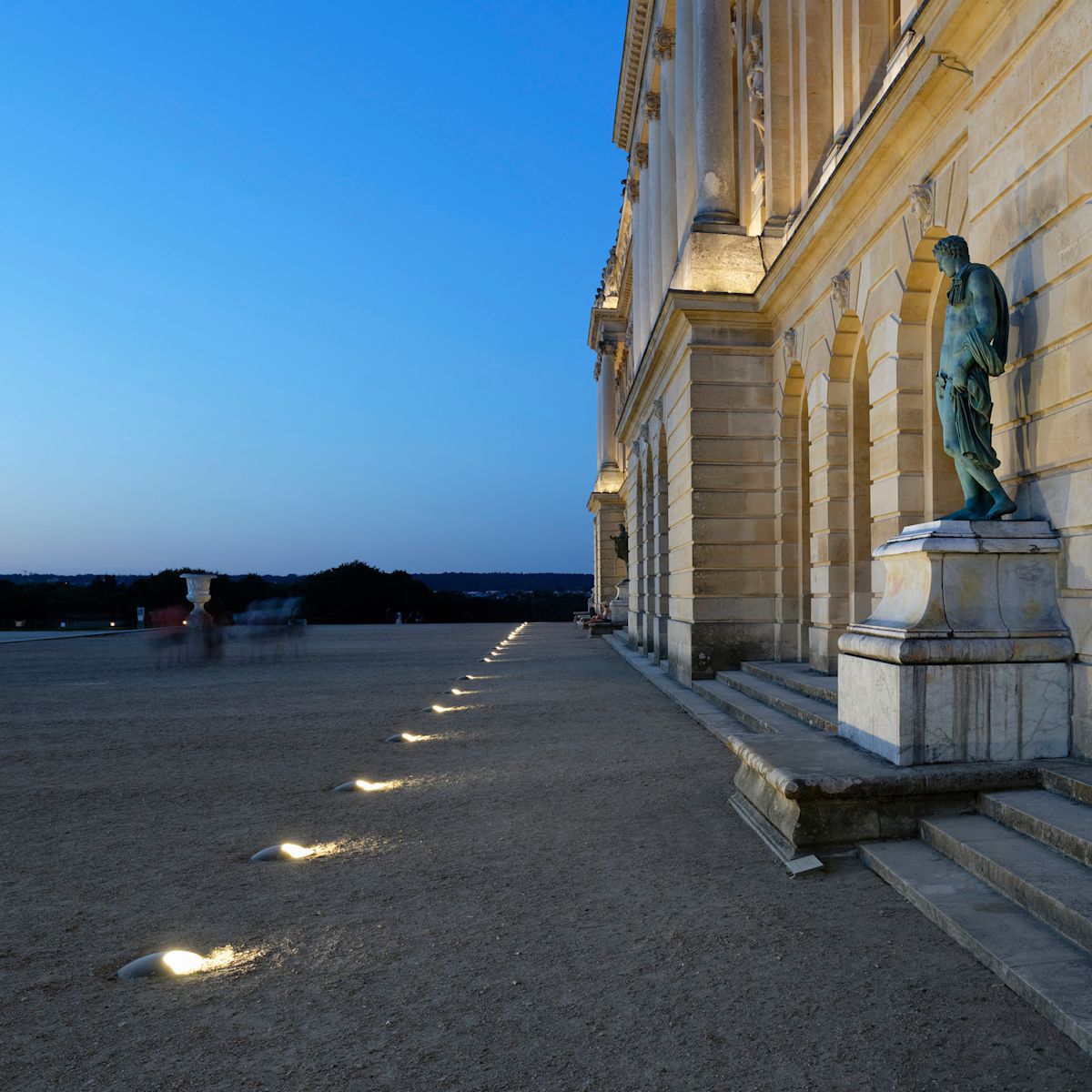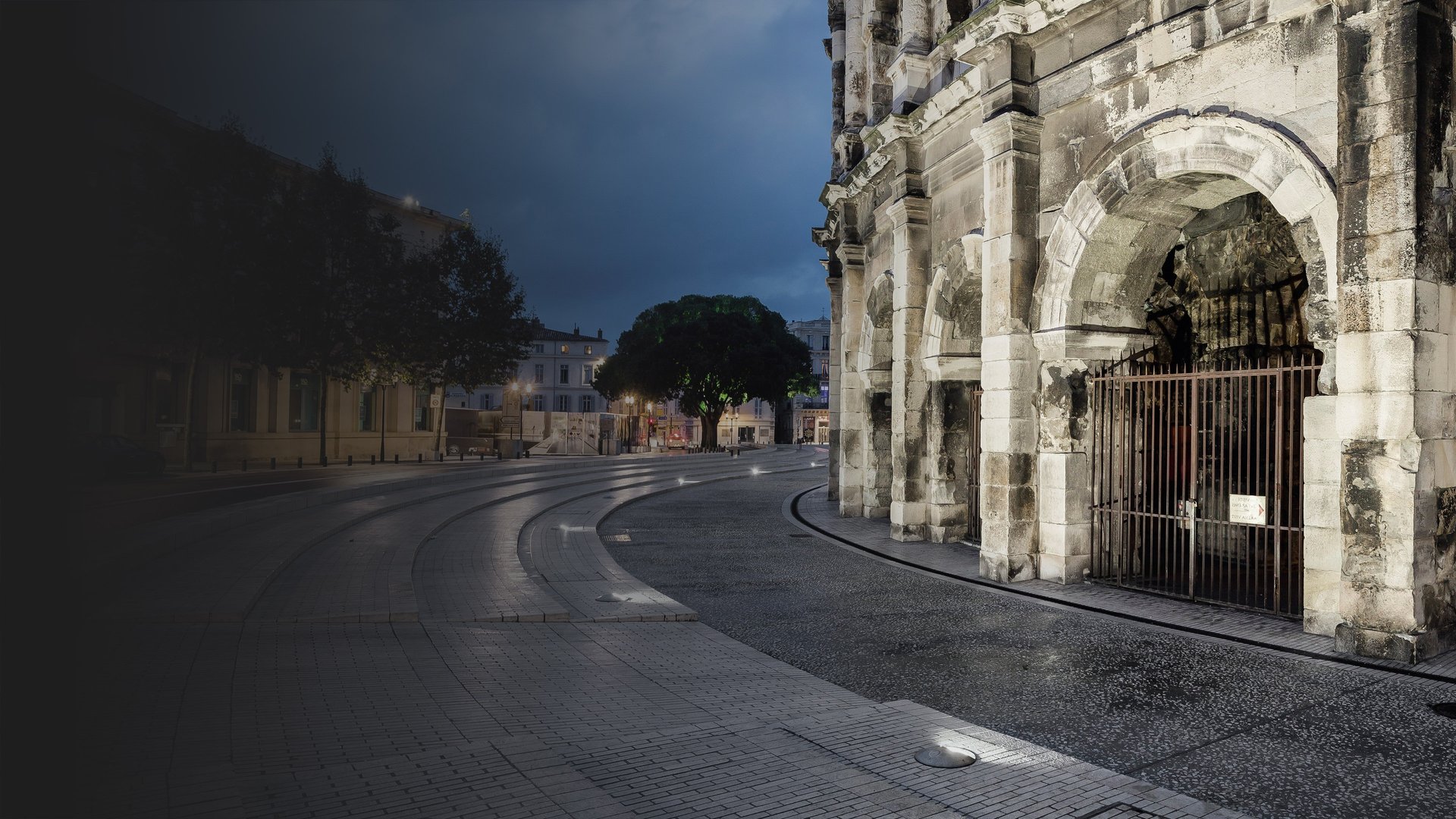

One of the largest palace complexes in Europe and also one of the most historic structures on the continent sparks a very special magic far beyond the borders of France.
The objective of the lighting design for the baroque structure is to give the Palace of Versailles, which, at its widest point, stretches to more than half a kilometre, a sublime long-distance effect at night.
Countless palace buildings were modelled after this UNESCO World Heritage Site until the 19th century. Special BEGA LED in-ground luminaires contribute to its appropriate staging. Two almost identical luminaires, which are barely distinguishable from the outside and create a harmonious overall look, take on very different lighting tasks at the palace proper and in the landscaped parks.
The in-ground floodlights with asymmetrical wide-angle light distribution illuminate vertical surfaces to perfection – in this case: the façade of the palace. The lower limit of the light distribution is linear and without any distracting light cones on the illuminated surface. The effect of the palace on the viewer is suitably imposing, even from a greater distance.
These custom in-ground floodlights are embedded in the light staging of the far-flung palace gardens, with its sculptures and landscaped features. Special reflectors and the resulting very narrow beam light distribution are used to stage the details of numerous sculptures, integrating the statues into the context of the gardens and the artfully pruned plants.



Avoiding glare in urban environments
Two lighting concepts for uniform light, consideration of residents' concerns and insect protection
Lighting concepts in urban spaces can be realised for spatially limited areas, as well as for structures with larger dimensions:
In addition to the task of appropriately staging the illumination, the conditions of the immediate surroundings must be taken into account. An essential requirement here is to prevent glare. Light shielded upwards has proven to be particularly insect-friendly as well. The right choice of luminaires and effective accessories ensures satisfactory results for lighting designers and local residents alike.
The light stagings presented here follow the main brief of illuminating with uniform light. They do, however, use different concepts to match local conditions, while achieving outstanding lighting results for the respective projects. Thanks to The sprawling dimensions of the amphitheatre in Nîmes allowed the use of in-ground luminaires as wall washers for its illumination. The luminaires were placed close to the structure, so that viewers find themselves behind the light source to avoid glare. The uniform light without distracting light cones in the lower area stages the 2000-year-old bricks, with their varied colour shading, to perfection.




For the Porta Nigra in Trier, glare-free illumination was an important planning factor. The luminaires had to be installed at a distance from the structure and above the eyeline of viewers, as they would usually be located in front of the luminaires. This placement prevents glare. High-performance floodlights with shields and louvres create directed light for the uneven shape of the building in such a way as to achieve a very uniform illumination. Secondly, virtually every beam of light is captured and targeted precisely to exactly where the light is needed.
In Trier, precisely aligned luminaires with additional light-directing shields and louvres are installed on cross beams to avoid glare for visitors and residents by the Porta Nigra. The light distribution additionally addresses the concerns of insect protection.



